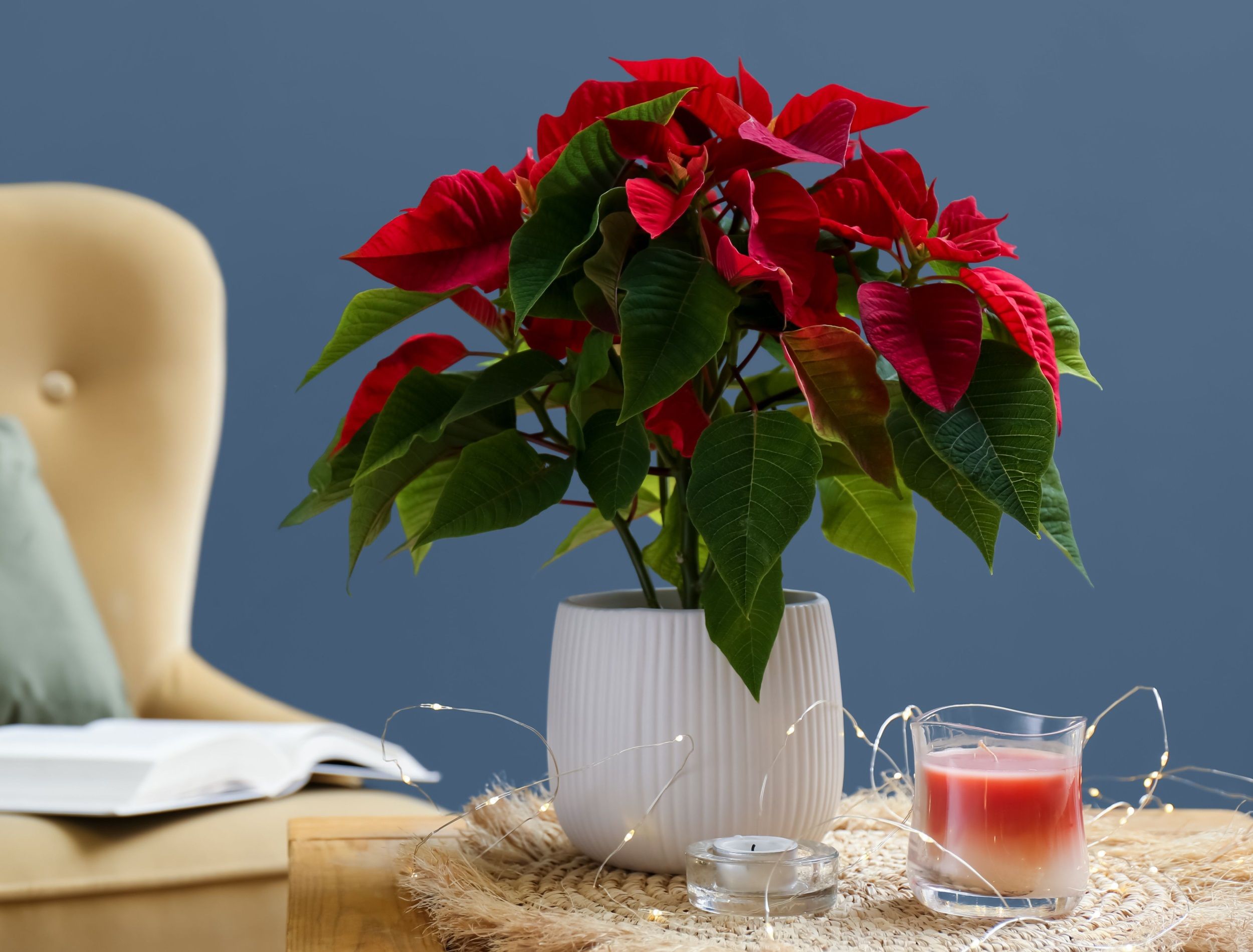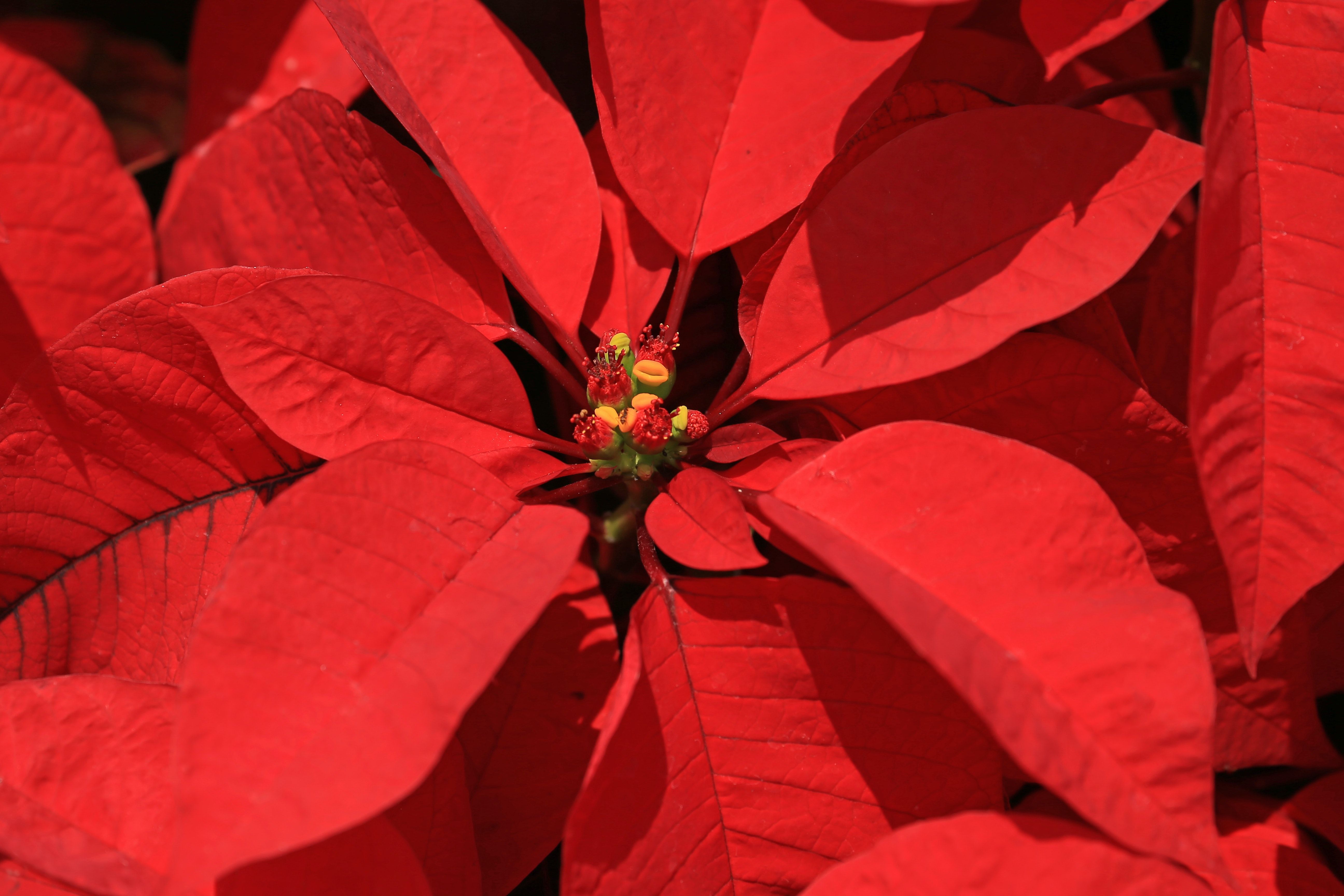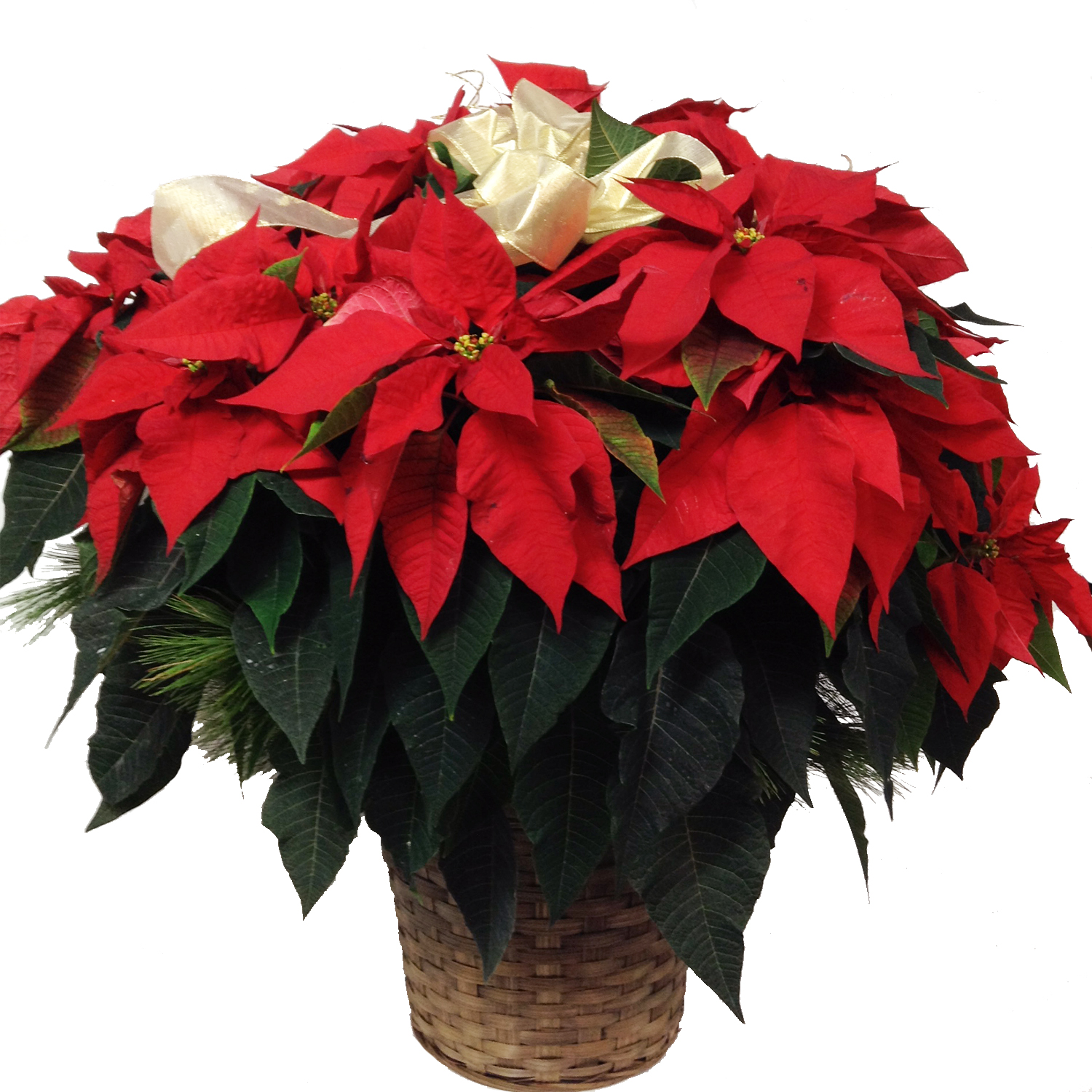Hey there, green thumb enthusiast! If you've ever wondered how to get a poinsettia plant to turn red, you're in the right place. Poinsettias are iconic holiday plants, but getting them to rebloom and display those vibrant red bracts can be a bit tricky. Don’t worry though, because we’ve got you covered with all the secrets and tips you need to transform your poinsettia into a stunning red masterpiece. Whether you’re a seasoned gardener or just starting out, this guide will make you a poinsettia pro in no time!
Picture this: it’s December, and everyone’s decorating their homes with festive cheer. Your poinsettia is sitting there, looking a little sad and green. You’re wondering, “Why isn’t my poinsettia turning red?” Well, my friend, the answer lies in understanding the plant’s natural cycle and giving it the care it deserves. In this article, we’ll dive deep into the science and art of coaxing those beautiful red bracts out of your poinsettia.
So, grab your gardening gloves and let’s get started. By the end of this guide, you’ll know exactly how to get a poinsettia plant to turn red and keep it looking fabulous all season long. Let’s make your holidays merry and bright with some poinsettia magic!
- 60th Marriage Anniversary Wishes Celebrating A Lifetime Of Love And Dedication
- Pastor Appreciation Sayings That Touch The Heart
Table of Contents:
- Biography of the Poinsettia Plant
- Why Do Poinsettias Turn Red?
- Understanding the Light Cycle
- Care Tips for Poinsettia Success
- Common Mistakes to Avoid
- Soil and Water Requirements
- Temperature Control for Blooming
- Managing Pests and Diseases
- Pruning Guide for Healthy Growth
- Frequently Asked Questions
Biography of the Poinsettia Plant
Before we dive into the nitty-gritty of making your poinsettia turn red, let’s take a moment to appreciate this incredible plant. The poinsettia (Euphorbia pulcherrima) is native to Mexico and Central America, where it thrives in warm climates. It was first introduced to the United States in the early 1800s by Joel Roberts Poinsett, the first U.S. ambassador to Mexico. Since then, it’s become a staple of holiday decorations worldwide.
Fun Fact: The colorful “flowers” of the poinsettia are actually bracts, not true flowers. The actual flowers are the small yellow structures in the center of the bracts.
- Crusade Prayers A Journey Through Faith History And Spirituality
- Unveiling The Flowers That Represent Hope A Journey Through Naturersquos Symbolism
Key Characteristics of the Poinsettia
Here’s a quick rundown of what makes the poinsettia so special:
- Size: Poinsettias can grow up to 10 feet tall in their natural habitat, but most houseplants stay around 1-3 feet.
- Colors: While red is the most popular color, poinsettias also come in pink, white, orange, and even marbled varieties.
- Seasonal Nature: Poinsettias are photoperiodic plants, meaning they rely on specific light conditions to bloom.
Why Do Poinsettias Turn Red?
Alright, let’s get down to business. The vibrant red bracts of a poinsettia don’t just appear out of nowhere. These plants rely on a process called photoperiodism to produce those stunning colors. Photoperiodism is the plant’s response to the length of daylight and darkness. For poinsettias, the key is long nights—specifically, 12-14 hours of uninterrupted darkness.
How It Works: During the fall and winter months, the days naturally become shorter, and the nights grow longer. This change in light triggers the poinsettia to start producing pigments called anthocyanins, which give the bracts their red hue. Without this specific light cycle, the plant won’t bloom properly.
Understanding the Light Cycle
Now that you know why poinsettias turn red, let’s talk about how you can recreate the ideal light cycle at home. Here’s what you need to do:
Creating the Perfect Environment
- Darkness: Starting in early October, give your poinsettia 12-14 hours of complete darkness every night. You can achieve this by placing it in a dark closet or covering it with a cardboard box.
- Light: During the day, make sure your poinsettia gets plenty of bright, indirect sunlight. Avoid direct sunlight, as it can scorch the leaves.
- Consistency: Stick to a strict schedule. Even a small amount of light during the dark period can disrupt the process.
Think of it like training a puppy. Consistency and routine are key to success. If you skip a day or expose the plant to light during the dark period, you might have to start the process all over again.
Care Tips for Poinsettia Success
Getting your poinsettia to turn red isn’t just about light. Proper care is essential for keeping the plant healthy and vibrant. Here are some tips to help you along the way:
Watering
Overwatering is one of the biggest mistakes people make with poinsettias. Always check the soil before watering. If the top inch feels dry, it’s time to water. Be sure to drain any excess water from the pot to prevent root rot.
Fertilizing
Feed your poinsettia with a balanced fertilizer every 4-6 weeks during the growing season. Once the bracts start to turn red, you can reduce fertilization to once a month.
Common Mistakes to Avoid
Even the best gardeners can make mistakes when caring for poinsettias. Here are some pitfalls to watch out for:
- Incorrect Light Cycle: As we mentioned earlier, inconsistent light exposure can prevent blooming.
- Overwatering: Soggy soil can lead to root rot and kill your plant.
- Temperature Fluctuations: Poinsettias prefer temperatures between 65-75°F (18-24°C). Avoid placing them near drafty windows or heat sources.
Remember, patience is key. Poinsettias take time to bloom, so don’t get discouraged if you don’t see results right away.
Soil and Water Requirements
The right soil and watering technique can make all the difference in your poinsettia’s health. Here’s what you need to know:
Choosing the Right Soil
Poinsettias thrive in well-draining potting soil. Look for a mix specifically designed for indoor plants. Avoid heavy soils that retain too much moisture.
Watering Techniques
When watering your poinsettia, aim for the base of the plant. Avoid getting water on the leaves, as this can cause fungal diseases. Water thoroughly until it drains out the bottom of the pot.
Temperature Control for Blooming
Poinsettias are sensitive to temperature changes, so it’s important to keep them in a stable environment. Here are some tips for maintaining the ideal temperature:
- Daytime Temperature: Keep your poinsettia in a room that stays between 65-75°F (18-24°C).
- Nighttime Temperature: Slightly cooler temperatures at night (around 60°F or 15°C) can help encourage blooming.
- Avoid Drafts: Keep your plant away from drafty windows, doors, and heating vents.
Think of your poinsettia as a Goldilocks plant. It needs everything to be just right to thrive.
Managing Pests and Diseases
No matter how well you care for your poinsettia, pests and diseases can still be a problem. Here’s how to deal with common issues:
Pests
Watch out for common pests like spider mites, whiteflies, and mealybugs. If you spot any of these critters, treat your plant with an insecticidal soap or neem oil spray.
Diseases
Root rot and leaf spot are two diseases that can affect poinsettias. To prevent these issues, make sure your plant has good drainage and avoid overwatering.
Pruning Guide for Healthy Growth
Pruning is an important part of poinsettia care. Here’s how to do it right:
- Timing: Prune your poinsettia in late winter or early spring, after the holiday season is over.
- Technique: Cut back the stems to about 6-8 inches above the soil. This encourages new growth and a fuller plant.
- Pinching: Once new growth appears, pinch back the tips to encourage branching.
Pruning might seem harsh, but trust us—it’s for the plant’s own good. A well-pruned poinsettia will be healthier and more vibrant.
Frequently Asked Questions
Got questions? We’ve got answers. Here are some common queries about poinsettias:
Q: Can poinsettias bloom more than once?
A: Absolutely! With the right care, you can get your poinsettia to bloom year after year. Just follow the tips in this guide, and you’ll be rewarded with beautiful red bracts every holiday season.
Q: Are poinsettias toxic to pets?
A: Poinsettias are mildly toxic to pets, but they’re not as dangerous as some people think. If your dog or cat nibbles on a leaf, they might experience mild stomach upset or drooling. To be safe, keep your poinsettia out of reach of curious pets.
Q: How long do poinsettias last?
A: With proper care, poinsettias can last several months. Some gardeners even manage to keep their plants alive for years, blooming beautifully each holiday season.
Q: Can I grow poinsettias outdoors?
A: If you live in a warm climate (zone 9 or higher), you can grow poinsettias outdoors. Just make sure they get the right light and temperature conditions to bloom.
Final Thoughts: So there you have it, folks! Now you know how to get a poinsettia plant to turn red and keep it thriving all year long. Remember, patience and consistency are key. With the right care, your poinsettia can become a holiday tradition that brings joy and beauty to your home for years to come.
What are you waiting for? Get out there and start turning those green bracts into fiery red ones. And don’t forget to share your poinsettia success stories in the comments below. Happy gardening, and may your holidays be merry and bright!



Detail Author:
- Name : Bert Dickens III
- Username : edgar.anderson
- Email : dexter08@yahoo.com
- Birthdate : 1995-06-29
- Address : 42020 Alex Tunnel Judyville, NJ 44603
- Phone : +13255439166
- Company : Emmerich, Boehm and Klocko
- Job : Mathematical Technician
- Bio : Veritatis necessitatibus totam itaque nostrum quae. Placeat et cumque vel dignissimos porro. Ad ullam libero cupiditate enim facere illo. In sed facilis consectetur maxime eos.
Socials
tiktok:
- url : https://tiktok.com/@jalonherzog
- username : jalonherzog
- bio : Dolorum porro eos quasi quia adipisci. Magnam fugit sed quo veniam nemo.
- followers : 2764
- following : 496
twitter:
- url : https://twitter.com/jalon5104
- username : jalon5104
- bio : Eveniet dicta saepe accusamus sunt. Eum quae et sint non atque modi beatae non. Ut aut exercitationem consequatur enim.
- followers : 2266
- following : 756
linkedin:
- url : https://linkedin.com/in/jalon_official
- username : jalon_official
- bio : Omnis fugiat ullam quam ut mollitia.
- followers : 3691
- following : 855
instagram:
- url : https://instagram.com/jalon_official
- username : jalon_official
- bio : In officiis id accusantium in rem. Nobis optio molestiae dignissimos vitae laborum.
- followers : 6840
- following : 2376